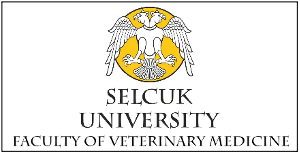| 2023, Cilt 39, Sayı 4, Sayfa(lar) 177-184 |
| [ Türkçe Özet ] [ PDF ] [ Benzer Makaleler ] |
| Carvacrol alleviates acrylamide-induced hepatotoxicity in rats: An Experimental insights |
| Aysegul Bulut1, Goktug Senturk2, Durmus Hatipoglu3, Mehmet Burak Ates1 |
| 1Selcuk University, Veterinary Faculty, Department of Pathology, Konya, Türkiye 2Aksaray University, Veterinary Faculty, Department of Physiology, Aksaray, Türkiye 3Selcuk Univercity, Veterinary Faculty, Department of Physiology, Konya, Türkiye |
| Keywords: Antioxidants, hepatoprotective, liver, oxidative stress, thyme |
| Downloaded:223 - Viewed: 751 |
|
Aim: This study aimed to investigate the protective effects of carvacrol (CRV)
on rat liver against acrylamide (AA)-induced hepatotoxicity.
Materials and Methods: A total of 30 Wistar Albino rats were used in the study. Rats were divided into 4 groups: Control (n:6), CRV (n:8, 50 mg/kg/ day carvacrol, i.p), AA (n:8, 40 mg/kg/day acrylamide, gavage) and AA+CRV (n:8, 40 mg/kg/day acrylamide, gavage + 50 mg/kg/day carvacrol i.p). At the end of the 15-day study period, the rats, whose blood samples were taken under anesthesia, were euthanized and necropsied. Liver function tests were examined from serums. At the same time for histological analysis, scoring, and hematoxylin-eosin staining, liver tissues were preserved in 10% formaldehyde solution. Results: In microscopic examination, it was determined that AA causes hydropic/vacuolar degeneration, fatty changes, necrosis/apoptosis, bile duct proliferation, hepatic cord dissociation, congestion, megalocytosis and mononuclear cell infiltration. Parallelly, AA raised the levels of ALP, AST, and ALT. The inclusion of CRV to the diet improved histological structure and liver function tests considerably. These results show that CRV has a hepatoprotective effect by reducing AA-induced liver damage. Conclusion: This study showed that CRV attenuated AA-induced liver injury. It is considered that its preventive effect against liver damage is due to its antioxidant properties. However, more research is needed to determine the specific mechanism at the molecular level and offer therapeutic management suggestions. |
| [ Türkçe Özet ] [ PDF ] [ Benzer Makaleler ] |




